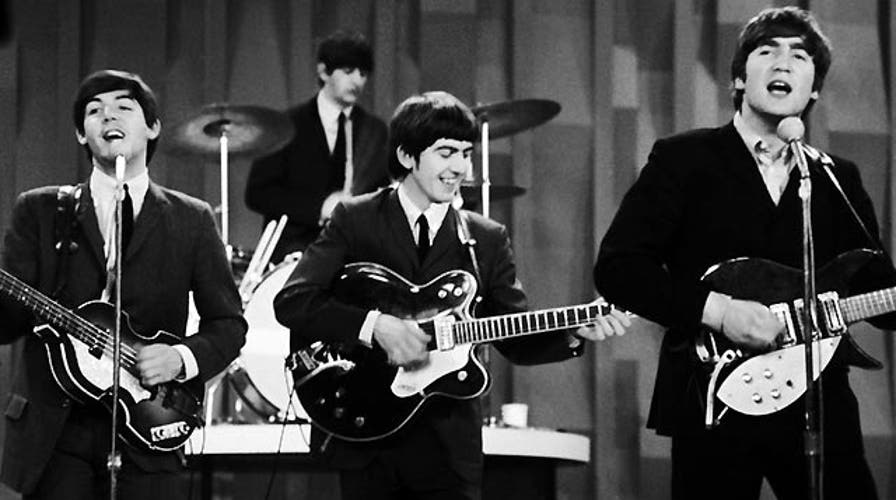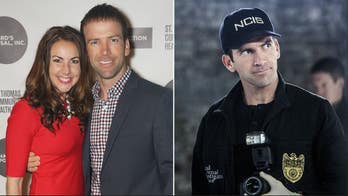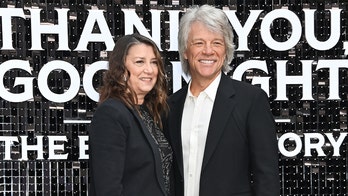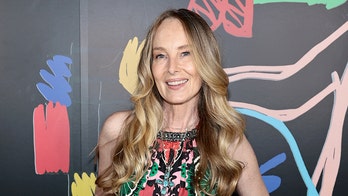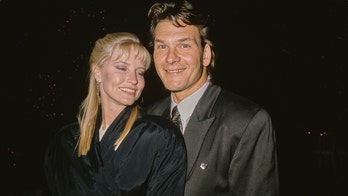“Now yesterday and today,” Ed Sullivan began the historic segment of Feb. 9, 1964, “our theater’s been jammed with newspapermen and the hundreds of photographers from all over the nation. And these veterans,” continued the jowly host of CBS’ "The Ed Sullivan Show," a hugely popular variety program broadcast live on Sunday nights from Studio 50 on Broadway and West 53rd Street, “agreed with me that this city never has witnessed the excitement stirred by these youngsters from Liverpool who call themselves The Beatles. Now tonight, you’re gonna twice be entertained by them: right now and again in the second half of our show. Ladies and gentlemen, The Beatles!”
So enormous and instantaneous was the jet-roar scream that emanated from the theatre’s 728 seats that few in the audience, or at home, heard the final four words of Sullivan’s introduction: “Let’s bring them on!” Waiting behind his Ludwig drum kit, seated atop the other three Beatles on a white circular platform that was in turn perched atop an even larger white circle, Ringo Starr felt a bit…underwhelmed…by Sullivan’s welcome. “I’ll always remember…his introduction,” Ringo told David Letterman a quarter-century later. “You know, we’re in America, we’re expectin’: 'Here they are, the greatest! It’s the best band in England! And they’re comin’ on NOW!' And Ed” – here Ringo adopted a dour, matter-fact manner: “said: ‘Here they are, the Beatles.’”
America was not underwhelmed. The estimated 73 million who tuned in – a record-shattering TV audience at the time – observed four dark-haired, skinny young men dressed in dark suits with white shirts and dark ties. At screen left stood a guitarist whose instrument pointed leftward, his head turned toward the other two guitarists manning the front line, as if to galvanize them to action, counting to five! while the others, guitars pointing rightward, bounced up and down with him in nervous energy. Twelve enormous, three-dimensional arrows descended on the quartet from all directions, reflecting CBS set designer Bill Bohnert’s intention to symbolize that the Beatles were HERE! And suddenly the one on the left was urging us to close our eyes, so he could kiss us…
Legend has it that the crime rate across America plunged to its lowest level in 50 years, with not a single hubcab stolen in New York, not a single teenager arrested in Washington, D.C., during that episode. In Britain, of course, the Beatles had already been No. 1 on the music charts, the entertainment phenomenon of the century, for over a year. But for most Americans, the Fab Four’s appearance on "The Ed Sullivan Show" marked their Introduction Proper to the band, the primary Building Block in their appreciation of the group. The Beatles would return to the States in the summer of ’64, touring America shortly after the debut of the second Building Block: the film "A Hard Day’s Night," from which countless American youths exited in a kind of dazed euphoria, determined to form their own bands (among them: David Crosby, soon of The Byrds). August 1965 would bring the next Building Block after that: the fabled Shea Stadium concert, which ushered in the era of arena rock. The story of the Beatles’ progress, or evolution, thereafter is so familiar that just about everything associated with it is at once iconic and clichéd.
For “second-generation” fans like me, however – kids who came of age starting in the mid-1970s, and for whom Epochal Beatles Moments consisted primarily of buying new singles by Paul McCartney and Wings and, most impactful, hearing the news (today, oh, boy) about the assassination of John Lennon, in December 1980 – getting a hold of the original “building blocks” of Beatle Worship was next to impossible. Sure, we could buy the "Meet the Beatles!" album, but CBS almost never re-ran old episodes of "The Ed Sullivan Show," and if they did, we had no recording devices for later viewing. As with the original, you had to be there when it happened. Occasionally, you’d see that "A Hard Day’s Night" was being screened, on reel-to-reel film projectors, at some old-movie festival or summer-camp series where you could barely hear the dialogue; and again, if you didn’t show up there and then, well, that was it. You’d have to wait another five years or so for your chance.
Today, of course, a few swift clicks will bring just about anything up on YouTube, from the hallowed "Sullivan" shows – the Beatles appeared on the program three more times – to what is widely regarded as the band’s finest live performance: their October 1963 gig in Stockholm, Sweden, which cultural critic Colin Fleming has described as “possibly the loudest rock and roll anyone had ever cut to date.” Coming along a decade after the Beatles gave up live performances forever, in August 1966, had its advantages, of course. Second-generation fans enjoyed access to more Beatles: mono and stereo issues, studio outtakes, scratchy demos, and other archival goodies that the first-generation fans, the Original Screamers in Studio 50, did not.
But it wasn’t easy. I did not get my hands on a copy of the original "Sullivan" appearance, Building Block Number One, until 1985, and even then, only on vinyl, in the form of a double-LP bootleg called "The Beatles Conquer America," which also included some of the group’s radio-station interviews and snappy press conference exchanges. Not until the 1990s – which was truly a Golden Age for hard-core collectors of Beatles rarities, a time when the EMI vaults at Abbey Road seemed magically to open wide, and spew forth soundboard-quality studio rehearsals in their entirety, Takes one through 20 of this song or that – did I finally obtain my own copies of the actual telecasts on DVD. It had been a long time coming, and well worth the wait.
The question is whether today’s third-generation fans – or is it fourth-generation? – are missing out on something special, a mystical experience, as surely as we second-generation fans missed out on the first wave of “excitement stirred by these youngsters from Liverpool.” Before the advent of the Internet, if you collected old comic books, say, you had to find a brick-and-mortar store that sold them, then trawl through delightfully moldy stacks and racks to see if it had the particular comics you were looking for. Now, once again, a few clicks and if you want "Green Lantern No. 76," the first installment in the groundbreaking run by Denny O’Neill and Neal Adams, you’ll find several dozen copies for sale, of varying condition, ranging from $6 to $6,000. eBay is an amazing capitalist engine, one that connects buyer and seller with stunning immediacy and efficiency; but it does remove the element of serendipity from collecting. It is no longer a matter of chance or timing, simply a calculation of how much you are willing to pay.
Yet The Fest for Beatles Fans, the traveling trade show-cum-symposium where I once stealthily obtained my cherished bootleg vinyl and VHS tapes – your best bet, really, if the usual haunts in Greenwich Village had temporarily been shut down by The Authorities, as happened periodically – seems to have weathered the Internet onslaught. Now in its fourth decade, the Fest is setting up shop at the Grand Hyatt in Manhattan this Friday, with appearances by Beatle Contemporaries like Donovan and Peter Asher. Sellers of all kinds of Beatles merchandise, paraphernalia, and artifacts will be on hand. If you’re obsessed enough to go, maybe the one thing you shouldn’t expect to find is another kind of mind there.
James Rosen is chief Washington correspondent for fox News. He is at work on a book about the Beatles, for which he has interviewed Sir Paul McCartney.
